
RETINA-THE JOURNAL OF RETINAL AND VITREOUS DISEASES
Scope & Guideline
Exploring Innovations in Retinal and Vitreous Diseases
Introduction
Aims and Scopes
- Retinal Diseases Research:
The journal emphasizes research on a wide range of retinal diseases, including age-related macular degeneration, diabetic retinopathy, retinal detachment, and inherited retinal disorders. - Surgical Techniques and Innovations:
Innovations in surgical procedures for retinal conditions, such as vitrectomy, scleral buckling, and the use of advanced intraocular devices, are a major focus, highlighting the latest techniques and their outcomes. - Imaging and Diagnostic Advances:
The journal showcases advancements in imaging technologies, particularly optical coherence tomography (OCT) and angiography, which are crucial for diagnosing and monitoring retinal diseases. - Clinical Outcomes and Patient Management:
Studies addressing clinical outcomes of various treatments, including pharmacological therapies and surgical interventions, are emphasized to provide insights into effective patient management strategies. - Genetics and Molecular Biology:
Research exploring the genetic factors associated with retinal diseases, as well as molecular mechanisms, contributes to the understanding of pathogenesis and potential therapeutic targets.
Trending and Emerging
- Artificial Intelligence in Ophthalmology:
The integration of artificial intelligence for diagnostic and predictive analytics in retinal imaging and disease management is rapidly gaining traction, indicating a significant trend in the field. - Telemedicine and Remote Monitoring:
The rise of telemedicine, particularly in the context of the COVID-19 pandemic, has led to an increased focus on remote monitoring techniques for retinal diseases, highlighting the need for accessible patient care. - Pharmacological Innovations:
Research on novel pharmacological treatments, including sustained-release drug delivery systems and new anti-VEGF agents, is becoming increasingly prominent, reflecting advancements in medical therapy. - Patient-Reported Outcomes and Quality of Life:
There is a growing interest in studies that assess patient-reported outcomes and quality of life following treatments for retinal diseases, emphasizing the holistic approach to patient care. - Multimodal Imaging Techniques:
Emerging techniques that combine different imaging modalities to enhance diagnostic capabilities and treatment monitoring are gaining popularity, reflecting advancements in retinal imaging technology.
Declining or Waning
- Older Surgical Techniques:
Traditional surgical methods may be declining in prominence as newer, less invasive techniques gain favor, reflecting a shift towards minimally invasive approaches in vitreoretinal surgery. - Basic Science Research:
There appears to be a waning focus on basic science studies that do not directly translate to clinical application, as the journal increasingly prioritizes clinically relevant research. - Epidemiological Studies:
The frequency of epidemiological studies on retinal diseases may be decreasing, possibly due to the growing emphasis on personalized medicine and targeted therapies.
Similar Journals
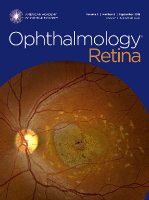
Ophthalmology Retina
Elevating standards in retinal research and clinical practice.Ophthalmology Retina is a premier academic journal dedicated to advancing the field of retinal research and clinical practice. Published by Elsevier Inc, this esteemed journal is instrumental for professionals and researchers focusing on the rapidly evolving domain of ophthalmology. Being ranked in the Q1 category for Ophthalmology and achieving an impressive ranking of 12 out of 137 in Scopus, it holds a significant place in the academic community, underscoring its quality and impact with a remarkable 91st percentile ranking. Covering an extensive range of topics from basic science to innovative clinical applications, the journal aims to bridge the gap between research and practice, offering invaluable insights to enhance patient care. The journal is dedicated to publishing high-quality research and reviews, fostering a forum for discussion and collaboration among thought leaders in the field. With its commitment to excellence and relevance, Ophthalmology Retina is a vital resource for anyone seeking to stay at the forefront of retinal studies.
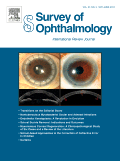
SURVEY OF OPHTHALMOLOGY
Elevating Knowledge in OphthalmologySURVEY OF OPHTHALMOLOGY is a premier journal published by Elsevier Science Inc, dedicated to advancing knowledge in the field of ophthalmology. With an impact factor reflective of its high-quality research—ranking 7th out of 137 in the Scopus category for medicine and ophthalmology, this journal maintains a prestigious Q1 categorization in its field for 2023. Since its inception in 1956, the journal has provided comprehensive reviews and original articles covering various aspects of ophthalmic research and clinical practice, supporting the ongoing education of researchers, professionals, and students alike. While open access options are not available, the journal remains an essential resource for the latest developments, discoveries, and expert insights that shape the future of eye health. Based in the United States, at STE 800, 230 Park Ave, New York, NY 10169, the journal continues a legacy of excellence in ophthalmology until 2024 and beyond, making it a pivotal element of scholarly discourse in this vital medical discipline.
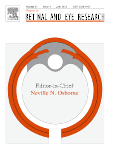
PROGRESS IN RETINAL AND EYE RESEARCH
Exploring the Depths of Retinal HealthPROGRESS IN RETINAL AND EYE RESEARCH, published by PERGAMON-ELSEVIER SCIENCE LTD, is a premier journal dedicated to the advancement of knowledge in the fields of ophthalmology and sensory systems. With an impressive impact factor and a Q1 category ranking in both Ophthalmology and Sensory Systems as of 2023, this journal exemplifies excellence in research dissemination. Given its stature, it ranks #1 out of 137 in Ophthalmology and #1 out of 42 in Neuroscience - Sensory Systems, placing it within the top percentile of scientific publications in these domains. The journal has been actively contributing to the field since its inception in 1994 and continues to be a vital resource for researchers, clinicians, and students seeking the latest insights and breakthroughs in the understanding of retinal diseases and eye health. While it maintains a traditional subscription model, the journal remains committed to publishing high-quality, peer-reviewed articles that drive forward the frontiers of eye research and therapeutic innovation. With its strong scientific rigor and a vast array of articles, PROGRESS IN RETINAL AND EYE RESEARCH is indispensable for anyone invested in the study of visual sciences.

Asia-Pacific Journal of Ophthalmology
Exploring the frontiers of eye health research.Asia-Pacific Journal of Ophthalmology is a distinguished open access journal published by the Asia-Pacific Academy of Ophthalmology (APAO), specializing in the latest advancements and research in ophthalmology. Since its inception in 2013, this journal has established itself as a vital platform for disseminating innovative findings and clinical practices across the Asia-Pacific region and beyond. With an impressive Scopus ranking of #10 out of 137 in the field of Medicine (Ophthalmology), placing it in the 93rd percentile, it garners significant attention and respect within the academic community. Currently holding a Q1 categorization in both Medicine (miscellaneous) and Ophthalmology, the journal embraces a broad scope that encompasses clinical studies, experimental research, and reviews aimed at enhancing the understanding and management of eye health. Its open access model since 2019 ensures that all published works are freely accessible, promoting greater collaboration and knowledge sharing among researchers, clinicians, and students. Situated in the Netherlands with a prominent address in Hong Kong, the journal serves as an essential resource for anyone dedicated to the field of ophthalmology.

BRITISH JOURNAL OF OPHTHALMOLOGY
Illuminating the Path to Better VisionThe British Journal of Ophthalmology, published by the BMJ Publishing Group, stands as a leading peer-reviewed journal in the field of ocular sciences, with a distinctive focus on advancing the understanding of vision and its impairment. With a rich history dating back to 1941, this journal serves as an essential platform for researchers, professionals, and students in ophthalmology and related disciplines. It prominently ranks in the Q1 quartile for Ophthalmology and Cellular and Molecular Neuroscience in 2023, reflecting its esteemed reputation in the scientific community. The journal boasts impressive Scopus rankings, including Rank #6 in Medicine - Ophthalmology, showcasing its influential contributions to the field. Although it does not offer open access, the journal is committed to disseminating high-quality research that informs clinical practices and enriches the understanding of sensory systems. Submissions are encouraged from all areas of ophthalmology, including clinical studies, innovative research, and systemic reviews. Join the vibrant academic dialogue by engaging with the cutting-edge findings published in the British Journal of Ophthalmology, which aims to bridge the gap between research and clinical application.
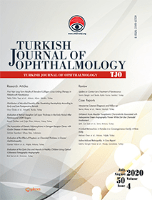
Turk Oftalmoloji Dergisi-Turkish Journal of Ophthalmology
Fostering Knowledge for Brighter VisionTurk Oftalmoloji Dergisi - Turkish Journal of Ophthalmology is a premier peer-reviewed publication dedicated to the field of ophthalmology, published by GALENOS PUBL HOUSE. Since its inception in 1997, this Open Access journal has championed the dissemination of high-quality research, fostering an inclusive environment for sharing knowledge and advancements in eye health. With an ISSN of 1300-0659 and an E-ISSN of 2147-2661, the journal serves as a vital resource for researchers, clinicians, and students interested in the latest findings and innovations in ophthalmic sciences. Although its coverage in Scopus has been discontinued since 2017, the journal has garnered a significant rank of 80 out of 114 in the field of Medicine – Ophthalmology, highlighting its relevance and impact within the discipline. Operating out of Istanbul, Turkey, the Turkish Journal of Ophthalmology continues to be a crucial platform for ophthalmologists and researchers to publish their work and advance the understanding of ocular health.

Journal of the Korean Ophthalmological Society
Exploring New Horizons in Eye HealthThe Journal of the Korean Ophthalmological Society, with ISSN 0378-6471 and E-ISSN 2092-9374, is a pivotal resource in the field of ophthalmology, published by the esteemed Korean Ophthalmological Society. Based in South Korea, this journal is committed to advancing knowledge in ophthalmology through the dissemination of research that spans both clinical and experimental studies. Despite its current Q4 ranking in the 2023 Ophthalmology category, it serves as a crucial platform for emerging scholars, practitioners, and students seeking to contribute to and learn from the latest developments in eye care. While the journal does not currently offer open access, it is dedicated to fostering scientific dialogue and innovation within the community. With convergence years from 2018 to 2024, the journal's focus on contemporary issues in ophthalmology positions it as a relevant and timely source of information, critical for those engaged in this dynamic field. For further inquiries, the journal can be contacted at their address in Seoul, South Korea: SKY 1004 BLDG 701, 50-1 Jungnim-ro, Jung-gu, 04508.
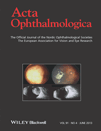
ACTA OPHTHALMOLOGICA
Exploring New Horizons in OphthalmologyACTA OPHTHALMOLOGICA, published by Wiley, is a premier academic journal dedicated to advancing the field of ophthalmology and related medical disciplines. Established in 1923 and maintaining esteemed status through converged years until 1994, and then from 2008 to the present, this journal has consistently delivered pioneering research, reviews, and clinical advancements essential for both practitioners and researchers in eye care. With an impressive impact factor and ranking within the top 15 of its category, ACTA OPHTHALMOLOGICA stands as a Q1 journal in both Medicine (Miscellaneous) and Ophthalmology, reflecting its significant contribution to the field. Although it is not an open-access journal, it continues to offer valuable insights and empirical findings that inform clinical practices and innovative research approaches. As such, it remains a vital resource for scholars, clinicians, and students keen to stay at the forefront of ophthalmological science.
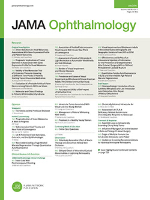
JAMA Ophthalmology
Catalyzing Change in the Field of OphthalmologyJAMA Ophthalmology, the premier journal in the field of ophthalmology, is published by the esteemed American Medical Association. Renowned for its rigorous peer-review process and commitment to advancing eye health research, JAMA Ophthalmology holds a prestigious position in the scientific community, boasting an impressive impact factor and ranking as Q1 in the category of Ophthalmology. With a Scopus rank of #3 out of 137 in its field and a remarkable 98th percentile, the journal serves as an invaluable resource for researchers, healthcare professionals, and students dedicated to the ophthalmic sciences. Readers can explore a wealth of cutting-edge findings, clinical studies, and review articles that not only contribute to the sustainable advancement of ophthalmic knowledge but also foster innovative approaches in patient care. As we converge into 2024, the journal continues to embrace open access principles, ensuring that groundbreaking research is readily available to a global audience, enhancing collaborative efforts and furthering the development of the ophthalmology discipline.

DOCUMENTA OPHTHALMOLOGICA
Empowering Researchers: Your Resource for Visual Science BreakthroughsDOCUMENTA OPHTHALMOLOGICA is a prestigious journal published by SPRINGER, dedicated to advancing the field of ophthalmology since its inception in 1938. With a robust ISSN of 0012-4486 and an E-ISSN of 1573-2622, the journal has consistently delivered high-quality research, meriting a Q2 classification in Ophthalmology and a Q3 classification in both Physiology and Sensory Systems as of 2023. Located in the Netherlands at VAN GODEWIJCKSTRAAT 30, 3311 GZ DORDRECHT, DOCUMENTA OPHTHALMOLOGICA aims to publish rigorous studies, reviews, and innovations that bridge clinical practice and research. Although it does not currently offer Open Access options, the journal remains vital for researchers, professionals, and students seeking to stay abreast of developments in visual sciences and contribute to foundational knowledge in these domains.